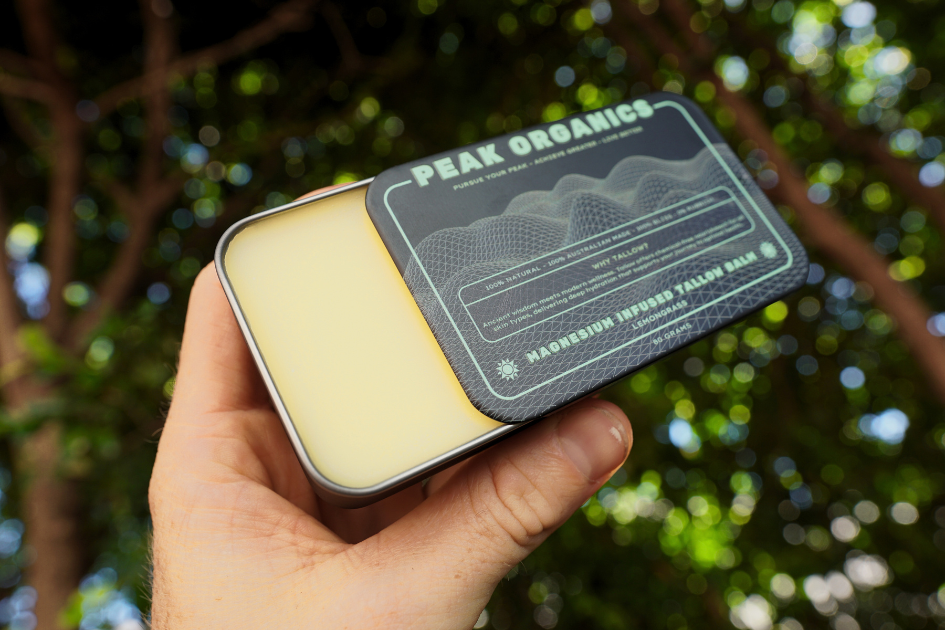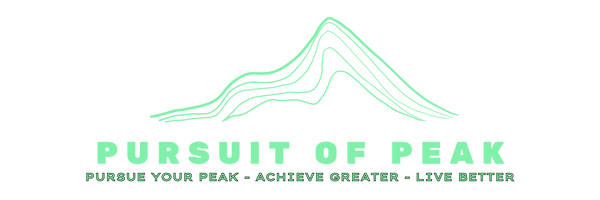
Harmful Chemicals in Skincare and Hair Care: A Guide to Toxic Ingredients and How to Avoid Them
Share
We're becoming increasingly aware of what we put into our bodies, but are we questioning what we put on them? Our skin is our largest organ, and it absorbs a significant portion of what we apply on it. What we put on our skin, ends up in our bloodstream, spooky. This raises a crucial question: are the chemicals in our everyday skincare and hair care products doing more harm than good?
Short answer: No.
Long answer: Absolutely bloody not.
Today I’m going to shed some light on the harmful chemicals lurking in most conventional skincare and haircare products while exploring the benefits of switching to natural alternatives. We'll also dive into a simple DIY recipe for a nourishing beef tallow balm. I.e an absolutely fantastic example of natural skincare and the foundation of my personal skincare routine.
If you've been keeping up to date with the Peak Blog you'll be well aware of the unreal benefits of Beef Tallow in skincare, otherwise you can read it here
The Hormone Connection: Why It Matters
Most conventional beauty products contain endocrine disruptors, chemicals that can interfere with our body's hormonal balance. These disruptors can mimic or block natural hormones, potentially leading to a range of health issues. These include but are definitely not limited to:
- Estrogen Mimickers (Xenoestrogens): These chemicals can potentially contribute to issues like early puberty, menstrual irregularities, and even increase the risk of certain cancers.
- Testosterone Interference: Some chemicals can lower testosterone levels, affecting fertility, muscle mass, and mood. Especially important for men, we’re already living in the convenience era where everything is fighting to take away our precious T.
- Thyroid Disruption: Certain chemicals can interfere with thyroid function, impacting metabolism, energy levels, and overall wellbeing.
- PCOS (Polycystic Ovary Syndrome): Research suggests a possible link between exposure to certain chemicals and the development of PCOS, a common hormonal disorder affecting women.

It's also important to consider the "Reliance Cycle" that some products create. They might offer quick fixes, but in the long run, they can damage your skin's natural balance, making you dependent on more products. For example, use some rubbish chemical haircare, cleanses, strips natural oils, need to re-up. Thus, the Reliance Cycle.
Common Culprits: Chemicals to Watch Out For
Here are some of the most common and concerning chemicals found in skincare and hair care products:
- Parabens: Used as preservatives, these are known endocrine disruptors that mimic estrogen.
- Phthalates: Used to make plastics more flexible, these are linked to reproductive and developmental issues. These have been coming under increasing pressure from the numerous studies linking them to estrogen disruption.
- Sulfates: Harsh cleansing agents that can irritate skin and potentially disrupt hormone function.
- Formaldehyde-releasing preservatives: Can release formaldehyde, a known carcinogen.
- Chemical Sunscreens (e.g., Oxybenzone): Some studies suggest these can interfere with hormones. Best to avoid sunscreens except those containing titanium dioxide or zinc oxide.
- Fragrance/Parfum: Often a cocktail of undisclosed chemicals, some of which may be harmful.
The Power of Natural: Embracing Nature's Solutions
The good news is that there are plenty of natural alternatives that can nourish and protect our skin without the potential risks associated with synthetic chemicals. Natural ingredients often work in harmony with our bodies, providing gentle yet effective care. Some great ingredients include: beef tallow, shea butter, coca butter, mango butter, jojoba oil, magnesium, olive oil, honey, beeswax and plenty more.
DIY Tallow Balm: A Natural Skin Savior
One fantastic example of natural skincare is tallow balm. Yes, you heard right, tallow. Before you picture something greasy and unpleasant, let me assure you, when prepared correctly, tallow is incredibly nourishing. It's rich in fatty acids similar to those found in our skin, making it easily absorbed and deeply moisturising.
While Peak Organics offer a nutritionally complete Magnesium-Infused Beef Tallow Balm, you can definitely scrounge up something very decent with ingredients you have at home, besides the tallow which can typically be purchased from butcher or online.

Here's a simple recipe to try at home:
Tallow Balm: Ancient Wisdom Meets Modern Skincare – 50g
What You'll Need:
- 42.5g rendered tallow (grass-fed is best, if you can find it – pretty easy to find in the tallow world)
- 5g coconut oil
- 2.5g olive oil
- 10 drops of your favourite essential oil (lavender, chamomile, or frankincense are great for skincare
The Method:
- Melt the Tallow: Gently melt the tallow in a double boiler or a heat-safe bowl set over a simmering pot of water. Low and slow is the key here. OR just microwave it.
- Combine the Oils: Once the tallow is melted, remove it from the heat and stir in the coconut oil and olive oil. Give it a good mix until everything is nicely combined. It should look like a golden, slightly melty concoction.
- Let it Cool (Slightly): Let the mixture cool for a few minutes. You don't want it to solidify completely, but you also don't want to add your essential oils to scorching hot oil (it can degrade them).
- Add the Essential Oils: Now for the fragrant finale! Add your chosen essential oils and stir well. This is where you get to personalise your balm.
- Pour and Set: Pour the mixture into a clean jar or tin. Let it sit at room temperature to solidify.
- Enjoy! Once the balm is solid, it's ready to use. Apply a small amount to your skin as needed. A little goes a long way with tallow balm, so don't slather it.
A Few Extra Tips and Thoughts:
- Storage: Store your tallow balm in a cool, dark place. It should last for several months.
- Why Tallow? Tallow is rich in fatty acids that are similar to those found in our own skin, making it incredibly nourishing and compatible. It also contains vitamins A, D, E, and K, which are all beneficial for skin health.
Other Natural Ingredients to Look For
Beyond tallow, many other natural ingredients offer incredible benefits for skin and hair:
- Aloe Vera: Soothes and hydrates irritated skin. Great for after sunburn.
- Tea Tree Oil: Has natural antibacterial and anti inflammatory properties.
Making the Switch: Tips for Choosing Safer Products
- Read Ingredient Lists Carefully: Learn to recognise common harmful chemicals.
- Use the EWG Skin Deep Database: This online resource provides safety ratings for thousands of products and ingredients.
- Patch Test New Products: Always test a small area of skin before applying a new product all over.
Conclusion: Prioritising Your Health and Wellbeing
By making informed choices about the products we use, we can significantly reduce our exposure to potentially harmful chemicals and prioritise our health and wellbeing. Embracing natural alternatives, like the tallow balm we just discussed, is a powerful step towards healthier skin and a healthier you. Consider making the switch to natural products, and feel the difference.
